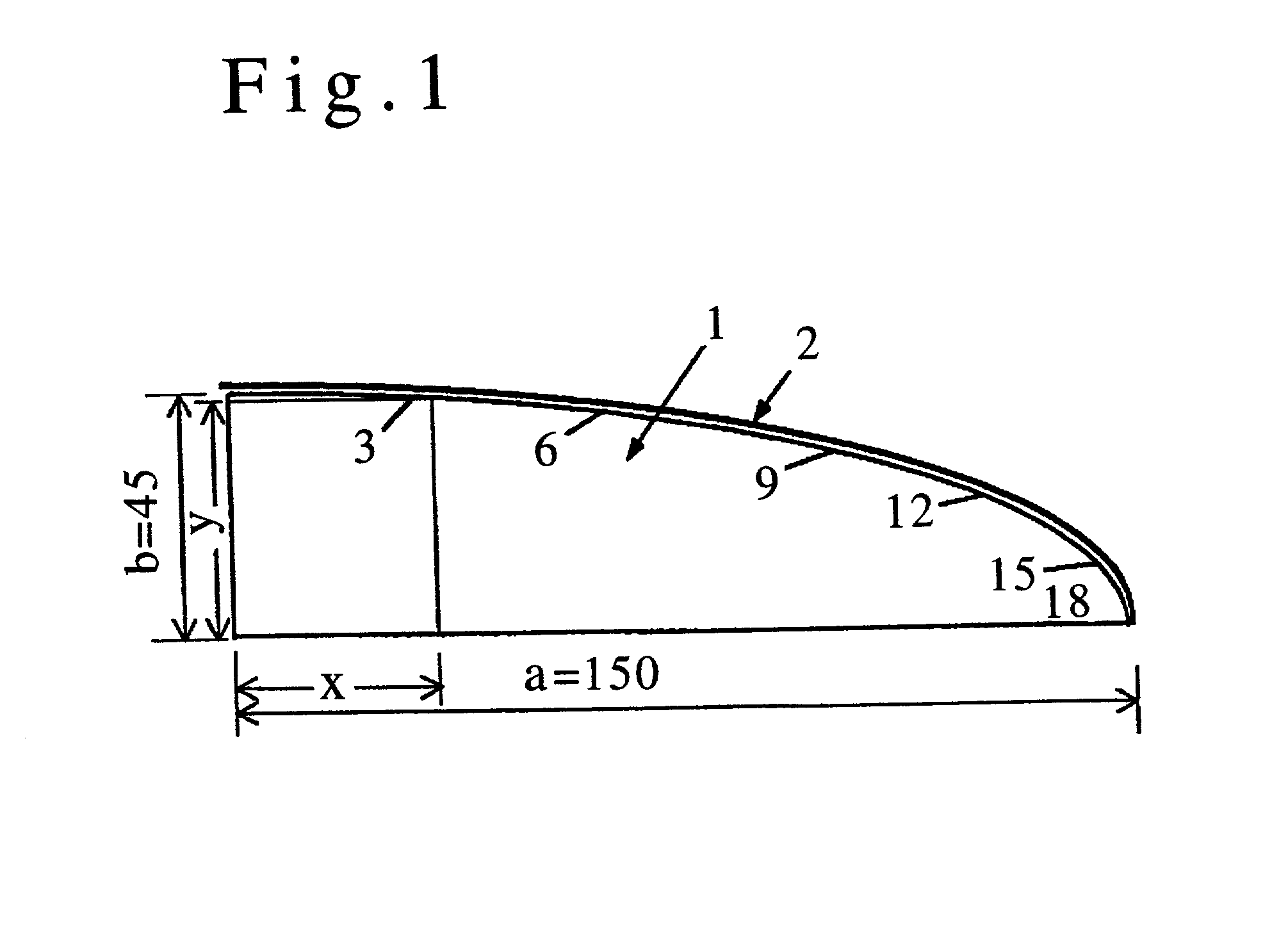Oil-resistant rubber modified polystyrene composition
a technology of modified polystyrene and oil resistance, which is applied in the field of rubber modified polystyrene composition, can solve the problems of reducing the degree of swelling of modified polystyrene, affecting the oil resistance of the resin thus formed, and poor oil resistance and flon resistance of modified polystyren
- Summary
- Abstract
- Description
- Claims
- Application Information
AI Technical Summary
Benefits of technology
Problems solved by technology
Method used
Image
Examples
first embodiment
[0038] A rubber modified polystyrene composition having a polybutadiene phase of particles of DIENE 70AC (made by Firestone Co., Ltd.), a gel content of 30.6% by weight, an average volume particle diameter of rubber particles of 9 .mu.m, a degree of swelling of 16, a residual volatile content of 1840 ppm, and a total amount of dimer and trimer of 7550 ppm was prepared using a devolatilization procedure according to the present invention, described above. The pressure of the gas-liquid separating section of the apparatus was set to 30 mm Hg, and the temperature of the flushed rubber modified polystyrene was set at 200.degree. C. When a critical strain was measured, no cracks were observed after exposure to any oil. The results are shown in Table 1.
example 2
[0039] A rubber modified polystyrene composition having a polybutadiene phase of particles of DIENE 70AC (made by Firestone Co., Ltd.), a gel content of 27.3% by weight, an average volume particle diameter of rubber particles of 8.7 .mu.m, a degree of swelling of 17.4, a residual volatile content of 380 ppm, and a total amount of dimer and trimer of 3600 ppm was prepared using the devolatilization procedure according to the second embodiment of the present invention, described above. In the first step, the pressure of the devolatilizing tank was set to 400 mm Hg and the temperature of the flushed rubber modified polystyrene was set at 170.degree. C. In the second step, the pressure of the devolatilizing tank was set to 5 mm Hg, and the temperature of the flushed rubber modified polystyrene was set to 200.degree. C. When a critical strain was measured, no cracks were observed after exposure to any oil. The results are shown in Table 1.
example 3
[0040] A rubber modified polystyrene composition having a polybutadiene phase of particles of DIENE 55AC (made by Firestone Co., Ltd.), a gel content of 28.3% by weight, a degree of swelling of 14.3, a residual volatile content of 60 ppm, and a total amount of dimer and trimer of 950 ppm was prepared using the devolatilization procedure according to the third embodiment of the present invention, described above. In the first step, the pressure of the devolatilizing tank was set to 50 mm Hg, and the temperature of the flushed rubber modified polystyrene was set to 215.degree. C. In the second step, water was used as the foaming agent, the pressure of the devolatilizing tank was set to 10 mm Hg, and the temperature of the flushed rubber modified polystyrene was set to 200.degree. C. When a critical strain was measured, no cracks were observed after exposure to any oil. The results are shown in Table 1.
PUM
| Property | Measurement | Unit |
|---|---|---|
| Temperature | aaaaa | aaaaa |
| Fraction | aaaaa | aaaaa |
| Fraction | aaaaa | aaaaa |
Abstract
Description
Claims
Application Information
 Login to View More
Login to View More - R&D
- Intellectual Property
- Life Sciences
- Materials
- Tech Scout
- Unparalleled Data Quality
- Higher Quality Content
- 60% Fewer Hallucinations
Browse by: Latest US Patents, China's latest patents, Technical Efficacy Thesaurus, Application Domain, Technology Topic, Popular Technical Reports.
© 2025 PatSnap. All rights reserved.Legal|Privacy policy|Modern Slavery Act Transparency Statement|Sitemap|About US| Contact US: help@patsnap.com


